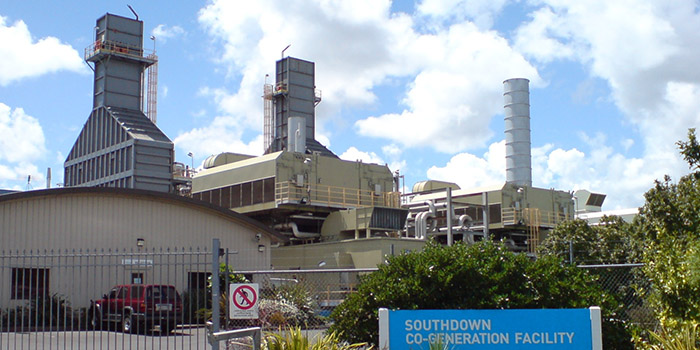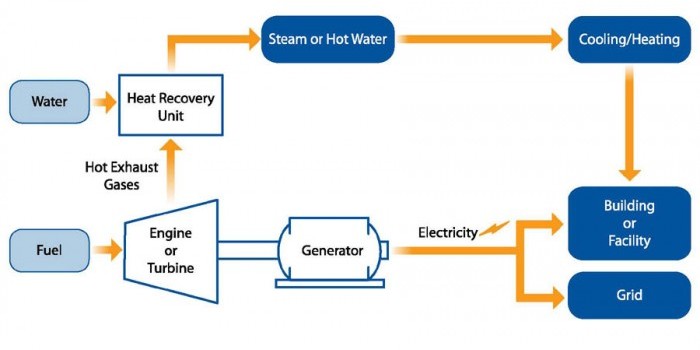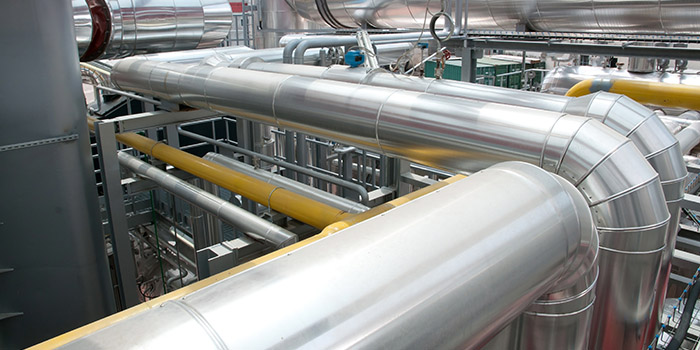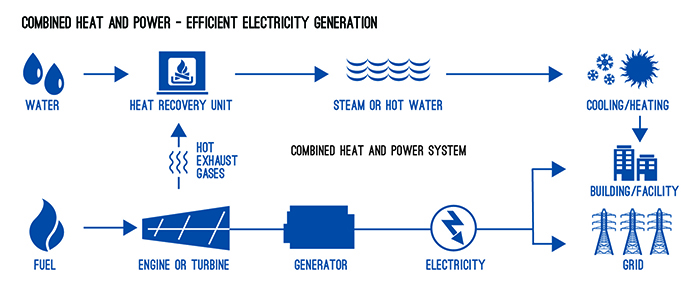In today’s energy production landscape, there’s a common topic that’s been popping up more frequently – sustainability.
The means in which energy is being produced is changing, people want more environmentally friendly options and many businesses, organizations and institutions are adjusting their corporate values to include sustainable practices that line up with those of the progressively eco-conscious masses.
One method that companies, organizations, and entire communities can execute to help meet sustainable energy goals is by implementing Combined Heat and Power Systems.

![]()
What are Combined Heat and Power Systems?
Combined Heat and Power, also known as Cogeneration, is an extremely efficient energy source that generates thermal energy and electricity simultaneously from a single fuel source such as natural gas, coal, and biogas in anaerobic digesters.
“Think of CHP as the LED light bulb alternative to the old Edison bulb. You still need the light that it produces, you are just producing that light in a much more efficient and cost-effective manner.” – ASI Energy
How Efficient is it?
Traditional power plants run at an efficiency rate of 35 -50% while CHP systems operate at an 85% efficiency rate on average.
“Although CHP still uses fossil fuel, it uses up to 92% of it, as opposed to receiving the energy from ‘the grid’ which only beneficially uses less than 40% of the energy produced” – ASI Energy
How does it Work?
A system is usually comprised of two essential parts:
- A power generator
- A heat recovery system
Waste heat from electricity generation is recovered rather than released into the atmosphere, that waste heat is captured and used for applications such as space heating and cooling, water heating and industrial processes.
What are the Benefits?
Buildings that operate using cogeneration have lower operating costs, require less fuel for energy production, increased reliability and power quality as well as a decrease in carbon emissions.
For example, a 300-room hotel utilizing a 300kW CHP can offset approximately 18,000 tons of CO2 and may be able to save as much as $2 to $3 million over 15 years.
The reduction in emissions is equivalent to preserving 162 acres of forest each year!
Cogeneration can range from large scale systems serving communities and large industrial complexes to smaller scale energy supply systems in hospitals, hotels, or universities.

“Smaller CHP units can work for 60-300 room hotels without a lot of space, because it provides a reliable power source and hot water, and costs less, with less space required, than solar technology.” – ASI Energy
![]()
The Current State of CHP
Much of the world’s power is generated by rotating machinery driven by the combustion of fuels, so cogeneration has a massive potential for growth all over the world. About 7% of Canada, 9% of the United States, and just over 8% of the world’s electricity generating capacity uses cogeneration.
Denmark, the Netherlands, and Finland are the current world leaders when it comes to cogenerations national electricity generation.
A study by the Oak Ridge National Laboratory calculated that by increasing market share to 20% by 2030, CHP would decrease greenhouse gas emissions by 600 million metric tons, the equivalent of taking 109 million cars off the road.
Those are some impressive numbers, Combined Heat and Power is proving to be a bright light for the future of clean-energy solutions and pivotal part of lowering CO2 emissions on a global scale.

![]()
*Special thanks to Brad from ASI Energy for the quotes and info!
Sources
http://www.greenlodgingnews.com/sustainable-energy-strategy-that-improves-property
http://powerforthefuture.ca/electricity-411/electricity-fuel-source-technical-papers/cogeneration/
http://www.c2es.org/technology/factsheet/CogenerationCHP
![]()














